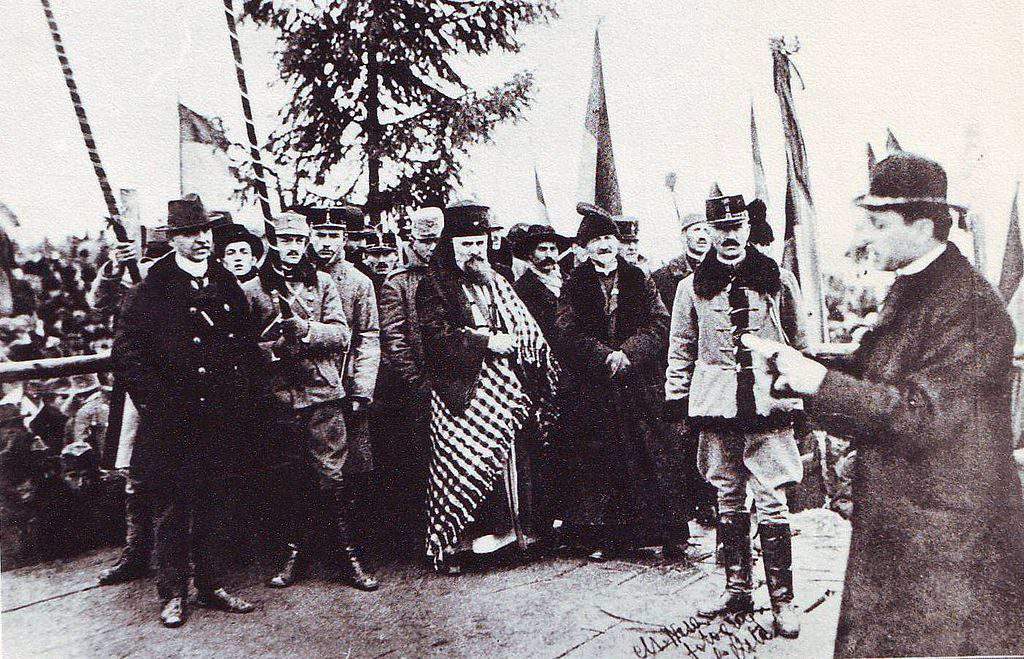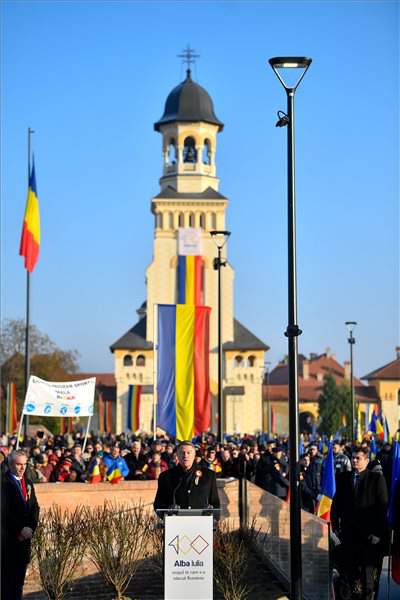100-year anniversary: the loss of Transylvania

Hungary lost Transylvania a hundred years ago: on December 1st, 1918, the Assembly at Gyulafehérvár (Alba Iulia) declared that Transylvania would belong to the Romanian Kingdom from then on. The “great unification” has been one of the most important national celebrations for Romanians since 1990; however, it has a completely different meaning to Hungarians. So, it is both a day of celebration and a day of mourning.
Events leading up to the 1918 decision
It is common knowledge that the real reason behind losing Transylvania is not the 1918 Assembly – reports Index. One of the main events leading to this was that the Central Powers were losing the first world war. Romania was part of the Allied Powers, thus came out a winner of WWI. Well, in some ways. Barely six months before the win, the Romanian Kingdom came under occupation, lost some territories and had to agree to a humiliating peace treaty. However, as the Allied Powers declared victory, the situation changed.
This brought along the opportunity to realise the Great Romania ideal – the real reason behind the country’s decision to join the world war.
Romania was neutral for the first two years of the war until a secret clause in 1916 promised them Transylvania if they join in.
The Assembly called together on the 1st of December in 1918 was meant to ratify this. The 1228 delegates expressed their wish to have Transylvania, the territory of Bánát and Máramaros, the Kőrős area as well as 26 counties in Eastern Hungary join the Romanian Kingdom. This seemed to comply with the Wilson’ principles; in reality, however, it was a one-sided decision made in Bukarest.
By the time the decision was made, the military occupation of Transylvania was already taking place.
It is true that Romanians are the majority in Transylvania; still, about 1.5 million Hungarians ended up under Romanian rule. Neither Transylvanian Hungarians nor Transylvanian-Saxons were asked about this decision. The Saxons accepted the decision in the end; however, both Hungarians of Cluj Napoca and the Szeklers declared that they do not wish to belong to Romania. Nevertheless, the Paris peace agreements recognised the borders that are in place today.
The significance of the event
In Hungary, the most symbolic date has become 1920 and the Trianon decision, sort of forgetting about the fact that Transylvania was lost already in 1918. On the other hand, from a Romanian perspective, December 1st of 1918 and Gyulafehérvár became symbolic, as the moment of the “great unification”. However, there are two sides to the story on the Romanian part as well. According to the more liberal side, Transylvania cost the lives of hundreds of thousands of Romanian soldiers, so this unification was more of an occupation. As opposed to this, the people’s party regards 1918 as the date of a new country’s birth – explains Nándor Bárdi historian.

Photo: wikipedia.org
From the Romanian side, it was brought up numerous sides why the Hungarians do not celebrate the 1st of December. In answer to this, it has to be mentioned that József Willer expressed the standpoint of minorities in 1932:
they expect loyalty from Hungarians but not the celebration of the loss of Transylvania.
Over time, this turned into an opinion on the government’s side that minorities do not exist, that there are no Hungarians, only “Romanian workers speaking Hungarian”. This was paired with a renewed significance to the “great unification”, implying that it restored historic continuum.
When it comes to Transylvanian Hungarian politics, the original 1918 decision of Gyulafehérvár is crucial, as it serves as a reference point to all the unkept promises towards minorities. The decision included a number of clauses that protected democratic and minority rights.
One example is the 3rd article that promises complete national freedom for nations living together. It declares the right to govern in their own language, with their own administration and their own elected leaders.
The situation today

Photo: MTI, Zsolt Czeglédi
Although these days, it might seem like Hungarians kept a safe distance from the celebration of Great Romania, as it would have caused indignation; if truth be told,
in 1988, Viktor Orbán himself saluted the correlation of the national celebration.
As opposed to this, in 2016, the Hungarian foreign secretary banned Hungarian diplomats from attending Romanian celebrations on this day, causing outrage in Romania. The common provocations from both the Hungarian and the Romanian far-right only add to the delicacy of the situation.

Photo: MTI, Zsolt Czeglédi
When asked about December 1st and the “Hungarian question”, Nándor Bárdi emphasised that, even if the unity of Romania is the main topic of discussion, it is still clear that the connection to Szeklerland and the national symbolic celebration are proof on their own that
there is, and remains, a need for the existence of parallel minority societies.
For more news, check out the second part of our ‘You know you’re Hungarian when…’ series.
Featured image: wikipedia.org
Source: index.hu






What a disgrace and the degree shame the international leaders responsible for this crime will forever bear.
[…] members of the Hungarian minority view the 100th anniversary of Romania’s “Great Unification” as more of a division – as a historical tragedy rather than triumph. The 1.2 million Hungarians in Romania today are […]
[…] members of the Hungarian minority view the 100th anniversary of Romania’s “Great Unification” as more of a division – as a historical tragedy rather than triumph. The 1.2 million Hungarians in Romania today are […]
Romanian celebration of swindling. Total criminal mentality….true gypsies!
Why do you insult our people without even know us? We are not gypses in any way!
The picture clearly shows it was taken in 1018. This means 1000 years ago. And it has Romanian flags. Any questions on why it belongs to Romania? 🙂
Transilvania territory was always a Romanian one. Hungarians occupied it and now they think it still belongs to them. My grandfather was killed by them. Just for fun. His house was burned down and his animals were slaughtered. Savages from Mongolia steppes! And the author of this article has no clue about the history! You want Transylvania? What for? I travel every year through your land. You have enough to do to build it up without further territory. I have seen your villages. So be quiet. It looks like gypsy ‘s homes. Why do you always have to be so rude, so insulting? For me is an act of non existing culture!
The splitting up of Hungary post wars is a disgrace.
Who should say, on what date whomever occupies it, should keep it?
Thank God in 1956 Magyars had the balls to revolt against communist rule. It started the fall of the Soviet block.
Pray another world war isn’t in the cards.
Tim
Thank you Tim for your insightful comments.
Marianne